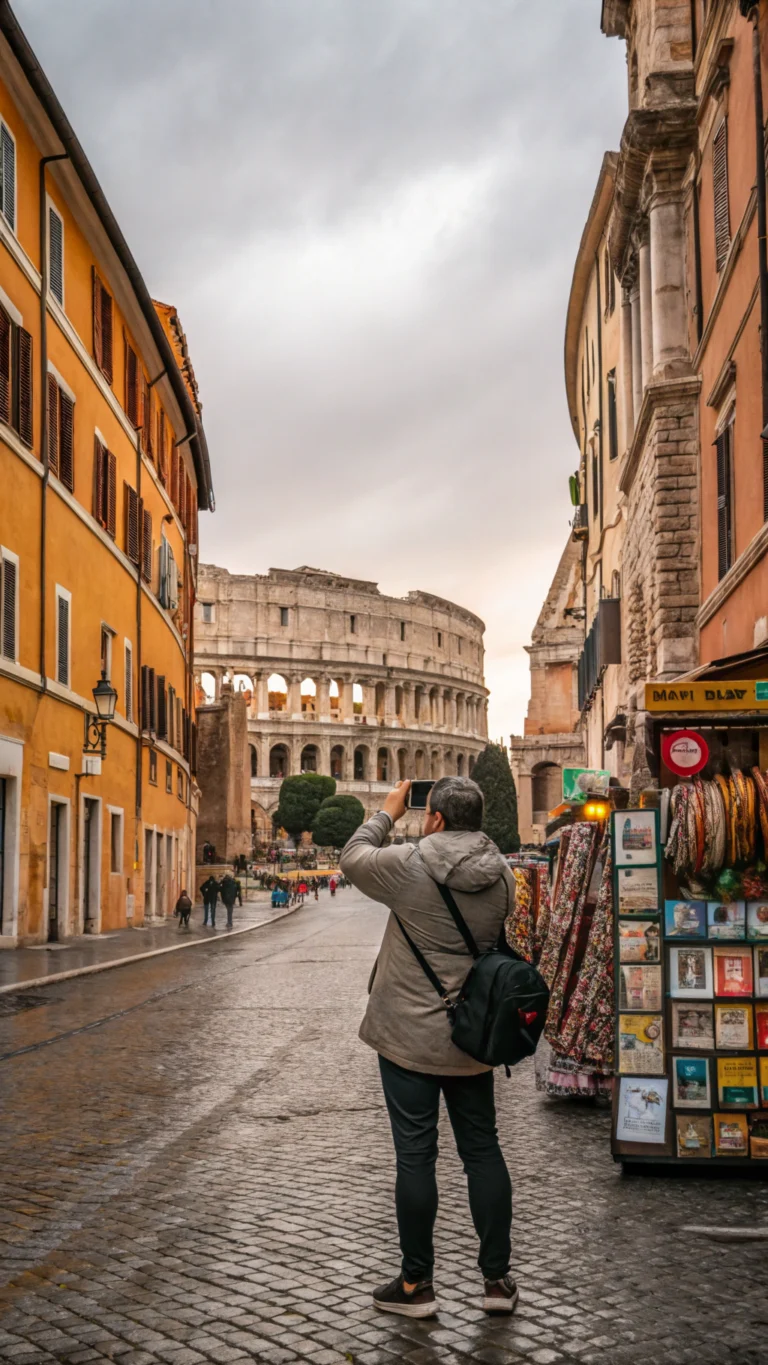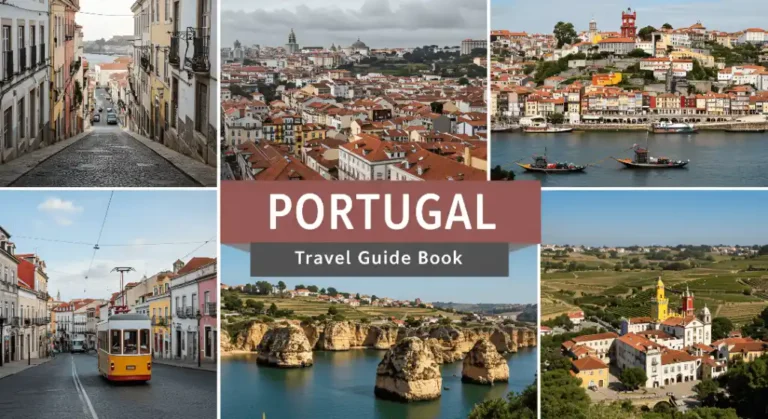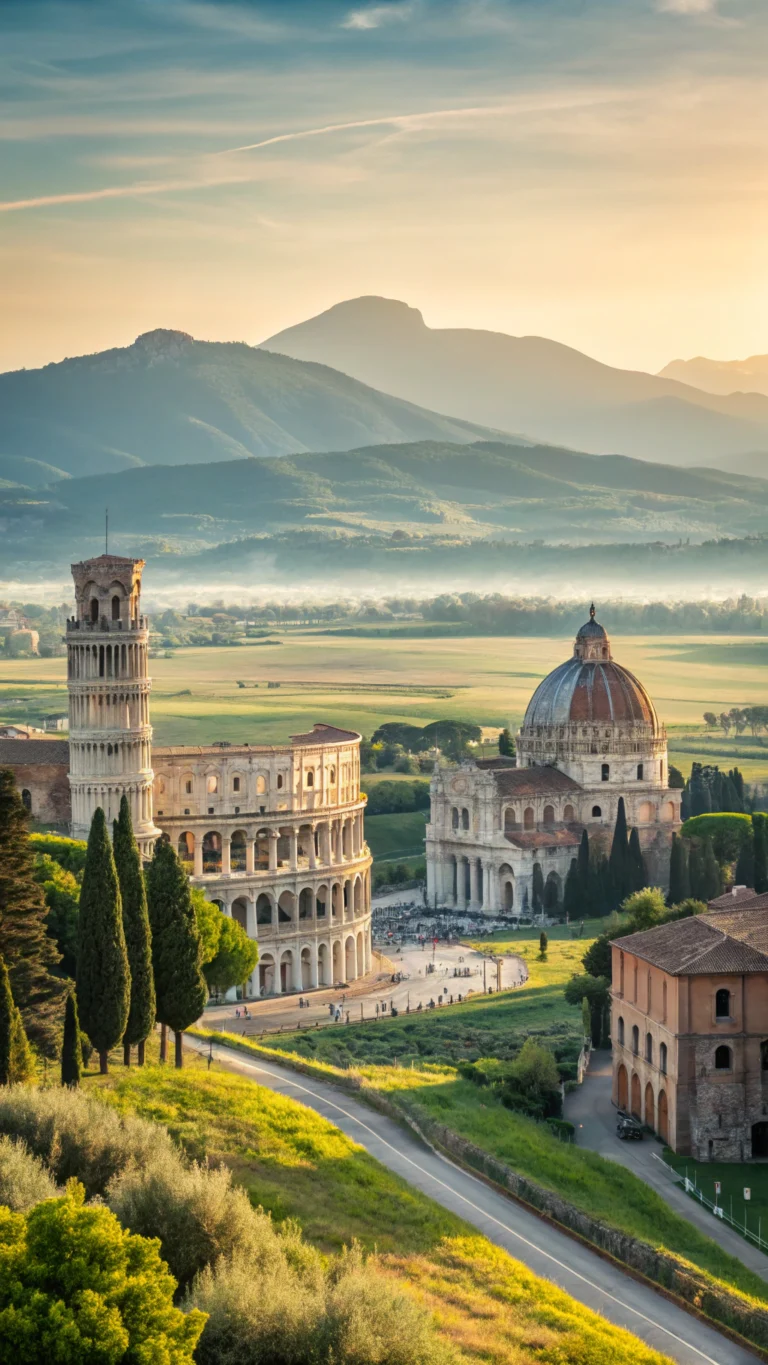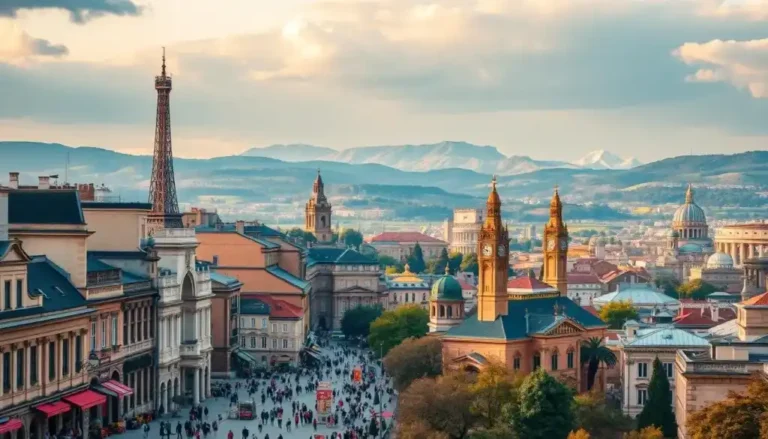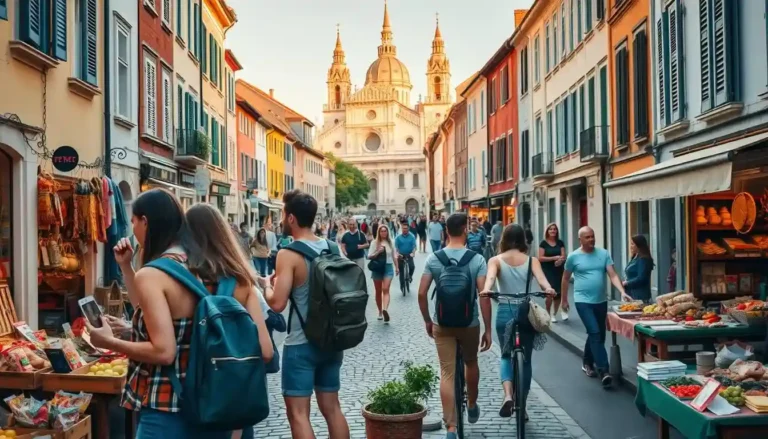Explore the Most Captivating Travel Destinations in Spain
Spain is a country that effortlessly blends rich cultural heritage with breathtaking natural beauty, making it a top destination for travelers from around the world. From the artistic treasures of Madrid to the sun-kissed beaches of the Costa Brava, Spain’s diverse regions offer a wealth of exciting experiences.
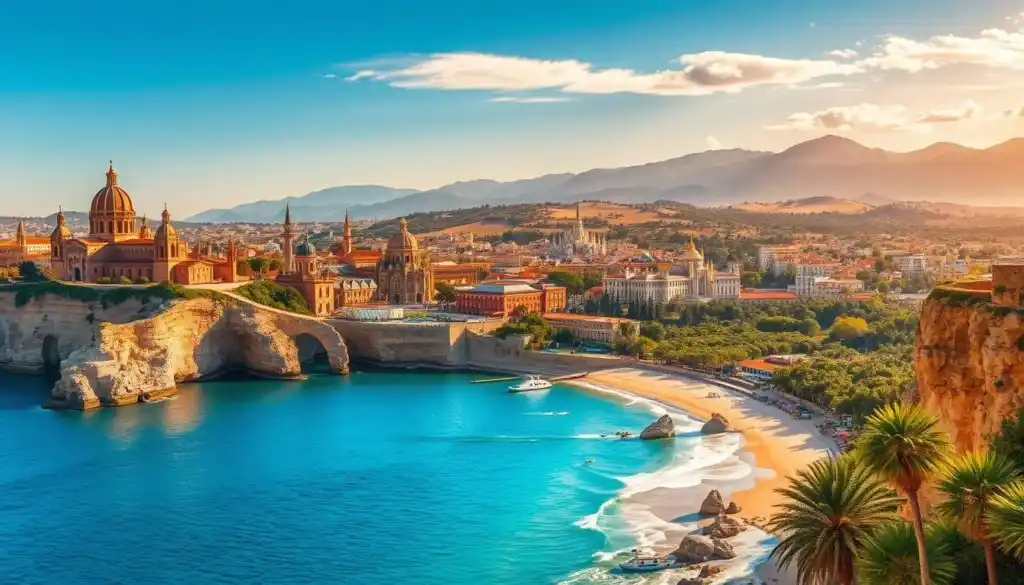
Whether you’re drawn to the vibrant nightlife of Barcelona, the historic charm of Seville, or the picturesque landscapes of the Spanish countryside, Spain has something for every kind of traveler. As you plan your trip, you’ll discover that each region boasts its own unique character and attractions.
Key Takeaways
- Discover the artistic and cultural treasures of Madrid
- Enjoy the beautiful beaches and vibrant nightlife of Costa Brava and Barcelona
- Explore the historic charm and architectural landmarks of Seville
- Experience the natural beauty of Spain’s diverse landscapes
- Immerse yourself in the local culture and cuisine
The Magic and Diversity of Spanish Travel
Spain’s captivating destinations are a testament to its complex history, cultural diversity, and breathtaking landscapes. As a country, Spain has managed to preserve its rich heritage while embracing modernity, making it a fascinating destination for travelers from around the world.
Spain’s Unique Cultural Tapestry
Spain’s cultural tapestry is woven from diverse threads, including Moorish, Gothic, and Renaissance influences. This blend is evident in its architecture, art, and traditions. The country’s cultural heritage is a significant draw for tourists, with landmarks like the Alhambra in Granada and the Mezquita in Córdoba showcasing its historical depth.
The cultural diversity across regions is another aspect that enriches the Spanish travel experience. From the flamenco rhythms of Andalusia to the Celtic music of Galicia, each region offers a unique cultural identity.
What Makes Spain a Top Global Destination
Spain’s popularity as a global destination can be attributed to its vibrant cities, beautiful beaches, and rich cultural heritage. Cities like Barcelona and Madrid are known for their artistic treasures and modernist architecture, while the Costa Brava and Costa del Sol offer stunning coastal experiences.
As noted by travelers and critics alike, “Spain is a country that has something for everyone, from the passionate flamenco dancers to the serene beauty of its landscapes.” This sentiment is echoed in the country’s ability to balance tradition with modern attractions, making it a top choice for travelers worldwide.
Barcelona: Modernist Wonders and Mediterranean Charm
Barcelona, the capital of Catalonia, is a treasure trove of architectural marvels, cultural experiences, and Mediterranean charm. This vibrant city on Spain’s Mediterranean coast is renowned for its rich cultural heritage and stunning architecture.
Gaudí’s Architectural Masterpieces
Barcelona is perhaps most famous for the works of Antoni Gaudí, whose modernist architecture has become synonymous with the city. The Sagrada Família, Park Güell, and Casa Batlló are just a few examples of Gaudí’s innovative and breathtaking designs that attract millions of visitors each year.
These landmarks not only showcase Gaudí’s unique style but also reflect the city’s embrace of creativity and innovation.
Exploring the Gothic Quarter and El Born
Beyond its modernist wonders, Barcelona is also home to historic quarters that offer a glimpse into its rich past. The Gothic Quarter, with its narrow streets and ancient buildings, is a must-visit for history enthusiasts. El Born, another historic neighborhood, is known for its boutique shops, art galleries, and cultural landmarks.
Visitors can explore these areas to experience the city’s cultural tapestry and enjoy the local cuisine in traditional eateries.
Barceloneta Beach and Coastal Experiences
No visit to Barcelona would be complete without enjoying its Mediterranean coastline. Barceloneta Beach is one of the city’s most popular beaches, offering a vibrant atmosphere and a range of water sports. The beachfront promenade is perfect for a leisurely stroll, with numerous restaurants and bars serving fresh seafood and local delicacies.
Barcelona’s coastal experiences are a great way to relax and enjoy the Mediterranean climate, making it an ideal destination for travelers seeking both culture and leisure.
Madrid: Royal Heritage and Artistic Treasures
Madrid, the vibrant capital of Spain, is a city that seamlessly blends rich history with modern flair. As visitors explore this captivating metropolis, they’re treated to a visual feast of artistic treasures, historic landmarks, and cultural experiences that showcase the best of Spanish heritage.
The Golden Triangle of Art
Madrid is renowned for its art museums, particularly those that form the Golden Triangle of Art: the Prado Museum, the Reina Sofia Museum, and the Thyssen-Bornemisza Museum. The Prado, with its extensive collection of European art, is a must-visit for art lovers. As Francisco Calvo Serraller, a Spanish art historian, once said, “The Prado is not just a museum; it’s a temple of art where masterpieces come to life.” The Reina Sofia is home to Picasso’s Guernica, a powerful anti-war statement that has become an iconic symbol of Spanish art.
Royal Madrid: Palaces, Parks, and Plazas
The royal heritage of Madrid is evident in its grand palaces and picturesque parks. The Royal Palace of Madrid, while not the official residence of the Spanish royal family, is used for official ceremonies and events. The adjacent Sabatini Gardens offer a tranquil escape from the bustling city. The historic center is also dotted with charming plazas, such as Plaza Mayor and Plaza de la Villa, which provide a glimpse into Madrid’s rich past.
“Madrid is a city that wears its heart on its sleeve, where the passion for art, culture, and life is palpable in every corner.”
— Anonymous
Tapas Culture and Vibrant Nightlife
No visit to Madrid would be complete without experiencing its famous tapas culture and vibrant nightlife. The city is dotted with bars and taverns serving a wide range of tapas, from classic patatas bravas to innovative creations. As the night falls, Madrid transforms into a lively party scene, with everything from flamenco shows to rooftop bars offering stunning views of the city.
In conclusion, Madrid is a city that offers something for everyone, whether you’re an art enthusiast, a history buff, or simply looking to experience the best of Spanish culture. With its rich royal heritage, world-class museums, and lively cultural scene, Madrid is a destination that will leave you with unforgettable memories.
Andalusia: Flamenco, Moorish Architecture, and White Villages
Andalusia beckons travelers with its unique blend of Moorish architecture, flamenco rhythms, and picturesque countryside. This region in southern Spain is a treasure trove of cultural heritage and natural beauty, offering a diverse range of experiences for visitors.
The region’s capital, Seville, is home to some of Andalusia’s most iconic landmarks. The city’s historic center is a maze of narrow streets and charming plazas, filled with architectural gems.
Seville’s Cathedral and Alcázar
Seville’s Cathedral, one of the largest Gothic churches in the world, stands alongside the Giralda Tower, a former minaret that now serves as a bell tower. The Royal Alcázar palace, with its Mudéjar architecture, is another must-visit attraction, featuring intricate tile work and serene gardens.

The Alhambra: Granada’s Crown Jewel
Granada’s Alhambra is a masterpiece of Islamic architecture, attracting millions of visitors each year. This ancient palace complex is renowned for its stunning Islamic art, reflecting pools, and lush gardens.
A visit to the Alhambra is not complete without exploring the Generalife gardens, which offer breathtaking views of the palace and the city below.
Pueblos Blancos and Rural Andalusian Charm
The Pueblos Blancos, or white villages, are a characteristic feature of Andalusia’s landscape. Towns like Ronda and Frigiliana are perched on hilltops, their whitewashed houses and narrow streets exuding a charming, rustic atmosphere.
| Location | Main Attraction | Best Time to Visit |
|---|---|---|
| Seville | Cathedral and Alcázar | Spring |
| Granada | Alhambra | Autumn |
| Ronda | Pueblos Blancos | Anytime |
Spain’s Best Travel Destinations Along the Mediterranean
From the modernist architecture of Valencia to the artistic legacy of Salvador Dalí in Costa Brava, Spain’s Mediterranean coast is a journey of discovery. This region offers a diverse array of experiences that cater to different interests and preferences.
Valencia: Futuristic Architecture and Paella
Valencia is a city that seamlessly blends tradition with innovation. Its futuristic architecture, particularly the City of Arts and Sciences, is a major draw. Visitors can explore the intricate designs of Santiago Calatrava and Félix Candela, among others. The city is also famous for its paella, a dish that originated in the surrounding rice fields. A visit to Valencia isn’t complete without trying an authentic paella at one of the local restaurants.
Costa del Sol’s Resort Towns and Málaga’s Renaissance
Costa del Sol is known for its beautiful beaches and resort towns like Marbella and Torremolinos. These destinations offer a range of leisure activities, from golfing to water sports. Málaga, the capital of Costa del Sol, boasts a rich Renaissance heritage, with landmarks like the Gibralfaro Castle and the Málaga Cathedral. The city’s historic center is filled with charming streets and plazas, making it a delightful place to explore.
Salvador Dalí’s Costa Brava
Costa Brava, particularly the town of Cadaqués, was a favorite haunt of Salvador Dalí. The region’s rugged coastline and picturesque villages inspired many of the artist’s works. Visitors can explore Dalí’s house-museum in Portlligat, which offers insights into the artist’s life and creative process. The natural beauty of Costa Brava, with its secluded beaches and clear waters, makes it an ideal destination for those seeking tranquility and inspiration.
| Destination | Main Attractions | Best Time to Visit |
|---|---|---|
| Valencia | City of Arts and Sciences, Paella | Spring |
| Costa del Sol | Beaches, Golf Courses, Málaga’s Renaissance landmarks | Summer |
| Costa Brava | Salvador Dalí’s House-Museum, Secluded Beaches | Autumn |
Spanish Island Escapes: Balearic and Canary Archipelagos
The Spanish islands, comprising the Balearic and Canary archipelagos, are a treasure trove of natural beauty and cultural richness. These islands offer a diverse range of experiences that cater to different tastes and preferences.

Mallorca’s Dramatic Landscapes and Hidden Beaches
Mallorca, the largest island in the Balearics, is known for its dramatic landscapes and secluded beaches. The Serra de Tramuntana mountains offer excellent hiking trails with breathtaking views. Some of the top attractions include:
- The historic town of Valldemossa
- The picturesque village of Deià
- The pristine beaches of Cala Mondragó
Ibiza and Formentera: Beyond the Nightlife
While Ibiza is famous for its vibrant nightlife, it also offers a tranquil side with its beautiful beaches and countryside. Formentera, the smaller sister island, is a haven for those seeking peace and natural beauty. Highlights include:
- The pristine beaches of Ses Illetes and Llevant
- The charming villages and salt pans
- The opportunity for water sports and cycling
Canary Islands: Volcanic Wonders and Year-Round Sun
The Canary Islands, located off the northwest coast of Africa, are a volcanic archipelago with a unique landscape. Tenerife, with its Teide National Park, is a UNESCO World Heritage Site. The islands offer:
- Year-round pleasant climate
- Opportunities for hiking and stargazing
- Beautiful beaches and vibrant cultural scene
In conclusion, Spain’s island escapes in the Balearic and Canary archipelagos offer a rich tapestry of experiences, from natural beauty to cultural heritage, making them ideal destinations for travelers seeking diversity and relaxation.
Northern Spain’s Gastronomic and Natural Wonders
Northern Spain is a treasure trove of gastronomic delights and natural wonders, waiting to be explored. This region is home to a diverse array of cultures, landscapes, and culinary traditions that set it apart from the rest of Spain.
The region’s unique geography, with its rugged mountains and lush valleys, has given rise to a distinct culinary identity. The Basque Country, in particular, is renowned for its innovative cuisine, which has revolutionized the way people think about food.
Basque Country’s Culinary Revolution
The Basque Country is a food lover’s paradise, with its emphasis on fresh, local ingredients and innovative cooking techniques. The region is home to some of the world’s top-rated restaurants, including three-Michelin-starred establishments like Mugaritz and Azurmendi. Visitors can sample the region’s famous pintxos, or tapas, at local bars and restaurants, and explore the bustling markets of Bilbao and San Sebastián.
The Camino de Santiago and Galician Seafood
The Camino de Santiago, a historic pilgrimage route, passes through Northern Spain, attracting travelers from around the world. Along the way, pilgrims can sample the region’s hearty cuisine, including Galician seafood, which is renowned for its freshness and flavor. Visitors can enjoy a range of seafood dishes, from pulpo a la gallega (Galician-style octopus) to grilled fish and shellfish.
Picos de Europa: Spain’s Stunning Mountain Range
Northern Spain is also home to the breathtaking Picos de Europa mountain range, a haven for outdoor enthusiasts. Visitors can hike, bike, or ski in the mountains, taking in the stunning scenery and spotting local wildlife, including wolves and eagles. The Picos de Europa National Park offers a range of activities and accommodations, from luxury hotels to rural cottages.
Spanish Culinary Journeys: Regional Specialties and Experiences
Spanish cuisine is a rich tapestry of flavors, with each region contributing its own specialties and traditions. The country’s culinary identity is deeply rooted in its diverse geography, history, and cultural heritage.
The varied landscapes of Spain, from the mountains to the coast, have given rise to a wide array of local ingredients and dishes. Regional specialties such as paella from Valencia, tortilla española from the central regions, and gazpacho from Andalusia showcase the country’s gastronomic diversity.
Wine Regions: Rioja, Ribera del Duero, and Cava Country
Spain is renowned for its wine production, with regions like Rioja, Ribera del Duero, and Catalonia’s Cava Country standing out. Rioja is famous for its Tempranillo-based red wines, while Ribera del Duero offers robust wines from the same grape variety. Cava, a sparkling wine from Catalonia, is perfect for celebrations.
| Wine Region | Notable Wines | Grape Varieties |
|---|---|---|
| Rioja | Reserva, Gran Reserva | Tempranillo |
| Ribera del Duero | Red blends | Tempranillo |
| Cava Country | Cava | Xarello, Parellada, Macabeo |
Food Markets and Cooking Experiences
Exploring Spain’s food markets and participating in cooking classes offer immersive culinary experiences. Markets like La Boqueria in Barcelona and Mercado San Miguel in Madrid provide a sensory journey through local produce, cheeses, and cured meats. Cooking classes allow visitors to learn the secrets of Spanish cuisine, from preparing tapas to cooking paella.
Meal Times and Dining Customs
Understanding Spanish dining customs can enhance the culinary experience. Lunch is typically served between 2 pm and 4 pm, and dinner between 9 pm and 11 pm. Tapas culture is integral to Spanish dining, with small plates served in bars and restaurants. Embracing these customs allows visitors to fully immerse themselves in the Spanish culinary tradition.
Essential Travel Tips for Your Spanish Adventure
To make the most of your trip to Spain, understanding the local transportation, accommodation options, and cultural nuances is crucial. Spain is a country with a rich history, diverse landscapes, and vibrant culture, making it a fascinating destination for travelers.
When planning your trip, it’s essential to consider how you’ll get around. Spain has an extensive and efficient transportation network, including high-speed trains (AVE), buses, and metro systems in major cities.
Navigating Transportation and Accommodation Options
Spain’s transportation system is well-developed, with high-speed trains connecting major cities like Madrid, Barcelona, and Seville. For accommodation, options range from luxury hotels to budget-friendly hostels and vacation rentals. Booking in advance is recommended, especially during peak travel seasons.
| Transportation Mode | Route | Frequency |
|---|---|---|
| AVE Train | Madrid – Barcelona | Every 30 minutes |
| Bus | Madrid – Seville | Every hour |
| Metro | Major cities | Every 5-10 minutes |
Seasonal Considerations and Festival Calendar
Spain is a year-round destination, but the best time to visit depends on your preferences. Spring (March to May) and autumn (September to November) are ideal for pleasant weather and fewer tourists. Summer is perfect for beachgoers, while winter is great for skiing in the Pyrenees. Spain is also known for its vibrant festivals, such as La Tomatina and Semana Santa, which are worth experiencing if you’re visiting during these times.
Language Basics and Cultural Etiquette
While Spanish is the official language, many regions have their own languages. Learning basic Spanish phrases like “gracias” (thank you) and “¿dónde está…?” (where is…) can go a long way. Spaniards value politeness and respect for tradition. For example, when dining, it’s customary to greet with “buen provecho” before eating.
By understanding these aspects, you’ll be better prepared for a memorable and enjoyable trip to Spain.
Conclusion: Creating Unforgettable Spanish Memories
Spain is a country that effortlessly weaves together rich history, vibrant culture, and breathtaking landscapes, making it an ideal destination for travelers seeking Spain travel memories that last a lifetime.
From the artistic treasures of Madrid and the architectural wonders of Barcelona to the flamenco rhythms of Andalusia and the gastronomic delights of the Basque Country, Spain’s diverse regions offer a wealth of unforgettable experiences.
As you explore the country’s many wonders, from the snow-capped peaks of the Picos de Europa to the sun-kissed beaches of the Costa del Sol, you will create memories that will stay with you forever.
Whether you are savoring local cuisine, strolling through historic neighborhoods, or simply soaking up the Spanish atmosphere, your journey will be filled with moments that make for truly unforgettable experiences.
With its warm hospitality, rich heritage, and endless opportunities for adventure, Spain invites you to craft your own unique travel story and cherish the memories of your Spanish escapade.
FAQ
What are the must-visit destinations in Spain?
Spain has a diverse range of captivating destinations, including Barcelona, Madrid, Andalusia, the Mediterranean coastal regions, and the Balearic and Canary Islands.
What makes Spain a top global destination?
Spain’s unique cultural tapestry, rich history, and diverse regions make it a top global destination, offering a wide range of experiences for travelers.
What are the best ways to experience Spanish culture?
To experience Spanish culture, visit the historic quarters of Barcelona, explore Madrid’s art museums, enjoy flamenco in Andalusia, and participate in local festivals and culinary experiences.
What are some essential travel tips for visiting Spain?
When traveling to Spain, consider navigating transportation and accommodation options, being mindful of seasonal considerations and festival calendars, and learning basic language and cultural etiquette.
What are some popular culinary experiences in Spain?
Spain offers a range of culinary experiences, including wine tastings in Rioja and Ribera del Duero, exploring local food markets, and enjoying traditional tapas and paella.
How can I get around Spain?
Spain has a well-developed transportation network, including high-speed trains, buses, and airports, making it easy to travel between destinations.
What are some off-the-beaten-path destinations in Spain?
Consider visiting the Picos de Europa mountain range, exploring the Camino de Santiago pilgrimage route, or discovering the hidden beaches of Mallorca.
What are the best times to visit Spain?
The best times to visit Spain depend on the region, but generally, spring and autumn are ideal for mild weather and fewer crowds.

